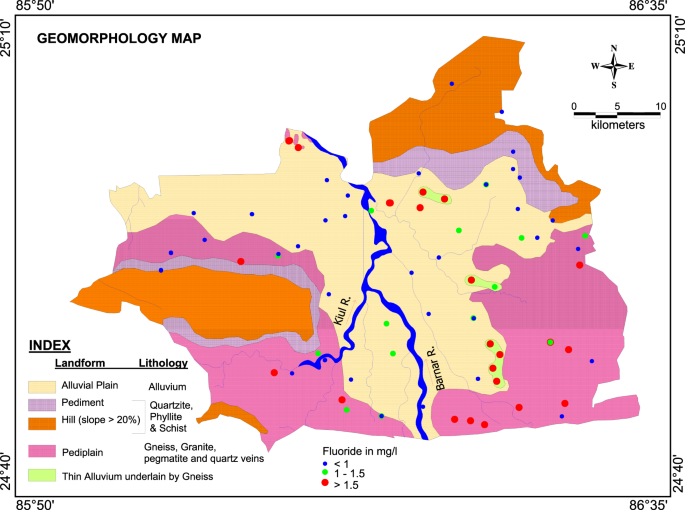
Groundwater serves as the primary source of drinking water for millions in India, particularly in rural areas where access to piped water systems remains limited. While fluoride is naturally present in water due to the dissolution of minerals in rocks and soils, excessive fluoride levels have become a significant public health issue in India. Fluoride contamination poses serious risks to human health, raising urgent questions about the safety of our drinking water.
Sources of Fluoride Contamination
Fluoride contamination in groundwater is predominantly geological in nature. India’s vast terrain contains fluoride-rich rocks that leach the element into aquifers. However, human activities like irrigation practices, industrial discharge, and inefficient water management exacerbate the issue. Regions such as Andhra Pradesh, Rajasthan, Gujarat, and Tamil Nadu have been identified as fluoride hot spots, with concentrations exceeding safe limits set by the World Health Organization (WHO), which recommends a maximum of 1.5 milligrams per liter.
Health Implications
Excess fluoride intake primarily affects dental and skeletal health. Dental fluorosis, characterized by mottled teeth, is a visible consequence of prolonged exposure, often seen in children. Skeletal fluorosis is more severe, leading to joint pain, stiffness, and even crippling bone deformities in extreme cases. Long-term exposure to high fluoride levels can also affect vital organs and cause neurological and developmental issues. Despite these risks, many communities remain unaware of the dangers due to lack of education and awareness about water quality.
Environmental and Socioeconomic Impact
The environmental consequences of fluoride contamination extend beyond human health. Crop irrigation using fluoride-laden water affects agricultural productivity and soil health. Contaminated soil reduces yields and damages local ecosystems, threatening the livelihoods of farmers. Socioeconomically, families burdened by medical expenses related to fluoride-induced ailments face financial distress, creating a cycle of poverty in affected communities.
Solutions to the Crisis
Addressing fluoride contamination requires a multi-pronged approach. First, rigorous groundwater testing and mapping in vulnerable regions can help identify areas at risk. Second, implementation of fluoride removal techniques such as reverse osmosis, activated alumina filters, and electrocoagulation can provide safer drinking water. Governments and local authorities must prioritize investment in water treatment infrastructure to ensure accessibility and affordability for all.
Education and awareness campaigns play a crucial role in empowering communities to take proactive measures. Teaching villagers to recognize symptoms of fluorosis and encouraging alternative water sources, such as rainwater harvesting, can mitigate exposure. Additionally, promoting research and development to explore cost-effective defluoridation methods will pave the way for sustainable solutions.
Conclusion
The fluoride contamination crisis in Indian groundwater highlights the urgent need for coordinated efforts to secure safe drinking water for all. With millions affected by its adverse health effects, addressing this issue is not just a matter of public health but also of social equity and environmental sustainability. By leveraging technology, education, and community involvement, India can overcome this challenge and ensure a healthier future for its people. The question remains: how committed are we to safeguarding the water we depend on?


